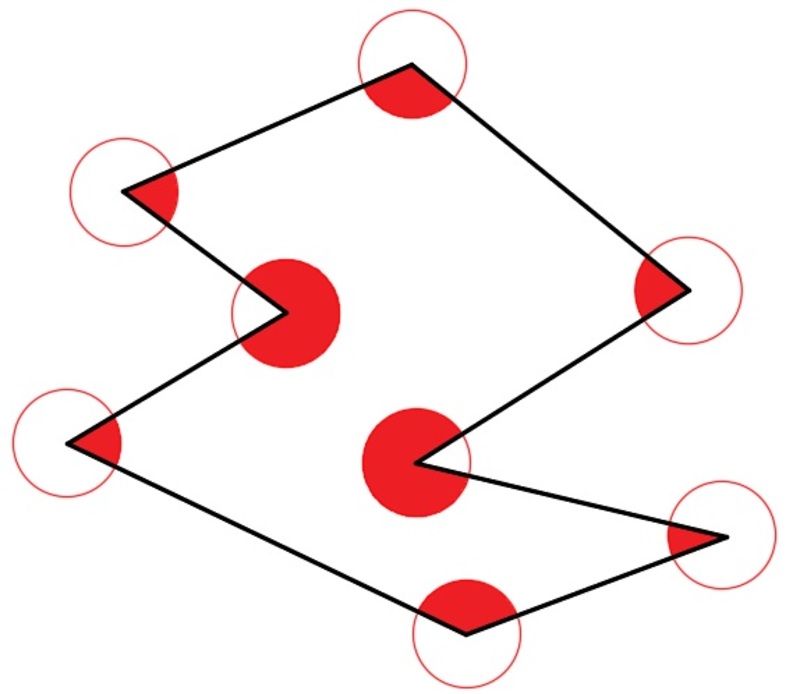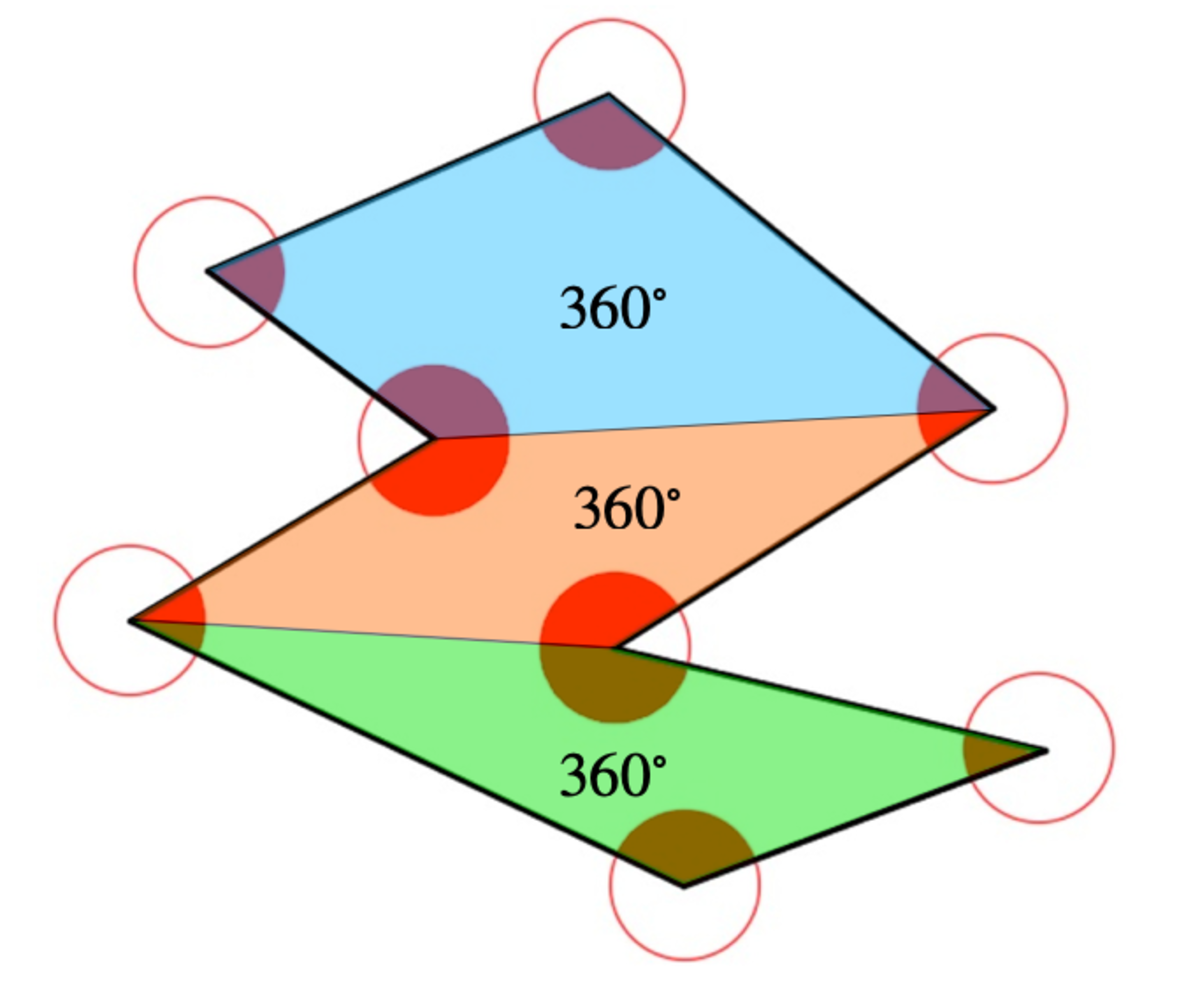sum of the red angles inside the polygon
What is the sum of the red angles inside the polygon in degrees?

The answer is 1080.
This section requires Javascript.
You are seeing this because something didn't load right. We suggest you, (a) try
refreshing the page, (b) enabling javascript if it is disabled on your browser and,
finally, (c)
loading the
non-javascript version of this page
. We're sorry about the hassle.
2 solutions

What software did you use in your diagram?
The formula for the sum of all interior angles is S = ( n − 2 ) 1 8 0 ∘ where n = # of sides
Yes, correct.
What?? If I'm not mistaken, the interior angle sum theorem applies if the polygon is convex. For example, I can construct a six-sided polygon with an interior angle sum of 585 degrees.
Log in to reply
Nope, it applies to any polygon and can be proven via induction
I think this problem should be edited.
But, Kano, I have a counterexample. 6 sided figure, 540 degrees, not equal to (6-2)*180. I don't know yet how to attach photos. But believe me, you can do it with 2 90 degree angles, two 45 angles, and two 135 angles.
Log in to reply
https://www.mathsisfun.com/geometry/interior-angles-polygons.html A lot of mathematicans have agreed that this formula is true for any polygon, so therefore it must be true right? Your argument is silly as I could say '6 sided figure, angle sum is 70 degs. With 5 10 degree angles and 1 20 degrees angle
The website you directed to me is all about convex polygons (regular polygons are a subset of convex polygons). So, I'm correct. To disprove something, it just takes one counterexample.